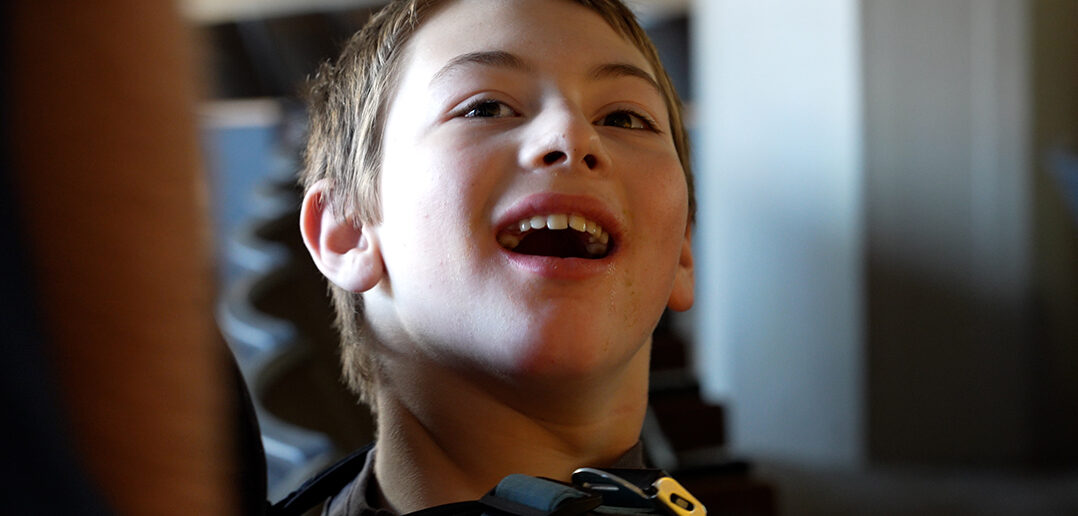Christianson syndrome conference returns to Providence.
At the Christianson Syndrome Association Conference in Providence in October, Whitney McMahon was sharing stories of what her 11-year-old son, Peyton, likes to do at home: sudsing dishes in the sink, pulling toilet paper off the roll.
Co-organized with Brown’s Center for Translational Neuroscience, the conference is an opportunity for families to connect, swap strategies, and learn about the latest research on the autism-like cognitive disorder that had unexpectedly changed the trajectory of their lives.
Christianson syndrome is an X-linked genetic disorder that affects brain development. Symptoms appear in early childhood, mostly in boys, and include epileptic seizures, delayed development, and cognitive disability, as well as serious difficulties with speech, balance, and mobility that can worsen over time. CS affects between 1 in 16,000 to 100,000 people, and treatments are extremely limited.
The 12 families at the 2022 conference came from around the world, as did several scientists, including Eric Morrow, MD, PhD, the Mencoff Family Professor of Biology at Brown and one of the world’s leading researchers of CS.
Danielle Tortolano had traveled from Vancouver with her 7-year-old son, Sean. “When you talked about Peyton getting into weird situations—Sean is the same way,” Tortolano said to McMahon. “I feel so validated. It’s just so great to be here.”
That support and solidarity are what the conference is all about, said Debbie Nash, founder of the CSA. “For new people attending the conference for the first time, it can be life-changing,” she said. Meeting in person also helps families feel that they’re a part of the solution.
“Everybody needs to feel that they’re a part of expanding the awareness, the education, and the research,” she said. “If we want to get results, if we want treatments to help our kids, we need everyone doing as much as they can.”
Among the most important actions families can take, Nash said, is to participate in research. Morrow, the director for the Center for Translational Neuroscience, is running several studies to try to develop better treatments for people with CS. For one study, families share MRI scans and samples of blood, DNA, and saliva.
At the conference, Morrow showed how these findings may inform the development of treatments. His group is focusing on the cerebellum, which is responsible for motor skills. Studies show a loss of tissue in that brain region in people with CS.
“If we can understand the underlying biology of what causes this slow regression, we believe there is time to prevent the loss,” Morrow said. “We’re thinking about strategies to treat the cerebellum to prevent the biological changes that are causing people to lose motor abilities in their 20s.”
Morrow’s team has found that gene replacement in neurons, derived from stem cells generated from patients, can treat those neurons in the lab—an early proof-of-principle experiment for future gene therapies. Such research is only made possible by the families, he said: “We can’t do this without their participation.”
Morrow is also collecting and analyzing brain tissue samples from deceased people with CS. The disorder is believed to shorten life expectancy, but by how much is unknown. The children at the conference were barely into double digits in age, yet already their parents felt like they should be thinking ahead.
“I wouldn’t even consider not donating my son’s brain to the study,” Tortolano said. “Especially if I thought it could help other families with CS so that they don’t have to go through what we’ve gone through.”




